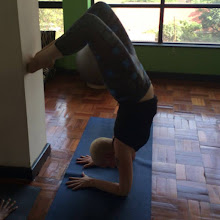A Ghanaian friend sent me a blog post on this Acqua for Life Challenge sponsored by the Giorgio Armani:
http://www.acquaforlifechallenge.org/en/content/project
It promises to provide 100l of clean water for every bottle of fragrance bought.
Since I do finding-out-things for a living, I was curious how exactly this worked.
The one bottle of fragrance = 100l of water equation sounds like a great deal, but is clearly a PR tool: lots of charities use something similar to fundraise. The send-a-cow charities often let people choose cows, goats etc from a catalogue to send to a specific village, but typically, that money goes into the fund for a programme rather than to individuals. Which makes sense, but it's still a little dishonest in advertising. Same with Kiva, the online small loan platform: people who choose to provide a small loan to help small entrepreneurs in developing countries are given the impression that their money will go to a specific entrepreneur. Again, this is not true, as the money is bundled and then given to (micro) finance institutions to onlend to their clients. This has been debated online quite extensively recently.
But back to fragrance purchase = water for kids. So how *does* this work?
The website is full of very pretty blue pics, and hardly has any useful information. Nothing of substance even here:
http://www.acquaforlifechallenge.org/en/content/whats-ghana
I then consulted Google, and Google tells me that the implementing partner organisation, Green Cross International (GCI), is a Geneva-based non-governmental organisation founded by President Mikhail Gorbachev in 1993. Its main areas of activity are:
• conflict prevention
• sources of conflict and war, and
• value change
The section on structure and organisation shows an impressive governing and honorary board. See here:
http://www.gci.ch/en/who-we-are/structure-and-organisation-of-green-cross-international.
Robert Redford is an honorary member - yumm!
The staffing section is much skinnier with 11 employees: http://www.gci.ch/en/who-we-are/staff.
Since this includes the president, vice president, and chief operating officer, it's a bit top heavy, but they might all be incredibly effective in preventing conflict. It doesn't strike me as an organisation that has much experience in carrying out on-the-ground water projects, but then they have a local implementation organisation: Green Cross Ghana.
But back to my initial quest of finding out how this water for fragrance thingie works:
I have dug around a bit and found the Ghanaian school programme under Conflict Prevention, sub-category Water for Life & Peace, sub-sub category Access to Water and Sanitation. Logical, not so? There's the 'Case Study Ghana'. I'm not sure this is quite the right term as Ghana seems to be the only project and is actually a pilot - they state that they plan to expand the project beyond the five communities that they currently work in.
The programme was launched in February 2010 and plans to do this:
'SWGS aims to provide safe drinking water, as well as sanitation, environmental and health awareness for children and their local communities in transboundary river basins. This includes:
1. Setting up a rainwater harvesting system
2. Providing ecological latrines
3. Bringing more water to the communities by building additional water systems
4. Running educational programmes'
(from http://www.gci.ch/en/what-we-do/conflict-prevention/water/access-to-water).
I can't find more details. They have a backgrounder on the school initiative in Ghana to download, but it basically repeats the information from the website.
So I still don't know how one bottle of fragrance = 100l of clean water actually works. I'd be keen to see the amounts raised through this so far, and what exactly they have been spent on – and how much went to GCI and how much to their local implementation organisation. When I clicked on the Aqua for Life Challenge website, an automatic counter told me that 44.646m litres of water have been ‘raised’ so far.
I think I’d also be more comfortable with donations being used for such a project if the implementing organisation had done the pilot already and had therefore demonstrated its expertise in running such projects.
Subscribe to:
Post Comments (Atom)




No comments:
Post a Comment